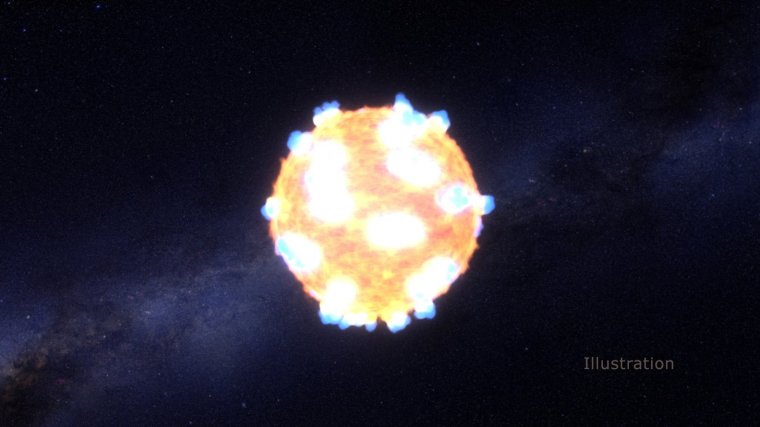| News / Space News |
Kepler Catches Early Flash of an Exploding Star
NASA | MARCH 23, 2016
The brilliant flash of an exploding star's shockwave, what astronomers call the "shock breakout" has been captured for the first time in visible light by the Kepler space telescope.

The brilliant flash of an exploding star's shockwave, what astronomers call the "shock breakout" - artist's concept. ![]()
In 2011, two of these massive stars, called red supergiants, exploded while in Kepler's view. The first behemoth, KSN 2011a, is nearly 300 times the size of our sun and a mere 700 million light-years from Earth. The second, KSN 2011d, is roughly 500 times the size of our sun and around 1.2 billion light-years away.
The steady gaze of Kepler allowed astronomers to see, at last, a supernova shockwave as it reached the surface of a star. The shock breakout itself lasts only about 20 minutes, so catching the flash of energy is an investigative milestone for astronomers.
Supernovae like these -- known as Type II -- begin when the internal furnace of a star runs out of nuclear fuel, causing its core to collapse as gravity takes over.
The two supernovae matched up well with mathematical models of Type II explosions reinforcing existing theories. But they also revealed what could turn out to be an unexpected variety in the individual details of these cataclysmic stellar events.
While both explosions delivered a similar energetic punch, no shock breakout was seen in the smaller of the supergiants. Scientists think that is likely due to the smaller star being surrounded by gas, perhaps enough to mask the shockwave when it reached the star's surface.
Understanding the physics of these violent events allows scientists to better understand how the seeds of chemical complexity and life itself have been scattered in space and time in our Milky Way galaxy.
All heavy elements in the universe come from supernova explosions. For example, all the silver, nickel, and copper in the earth and even in our bodies came from the explosive death throes of stars
YOU MAY ALSO LIKE



